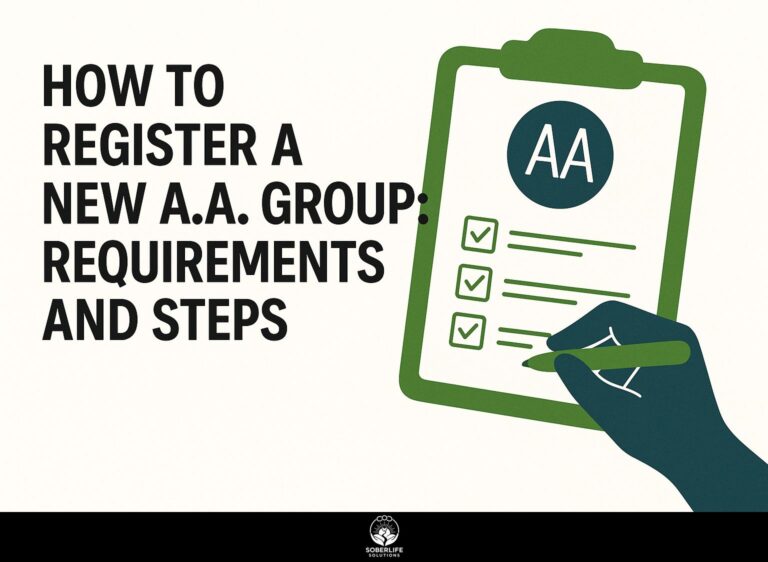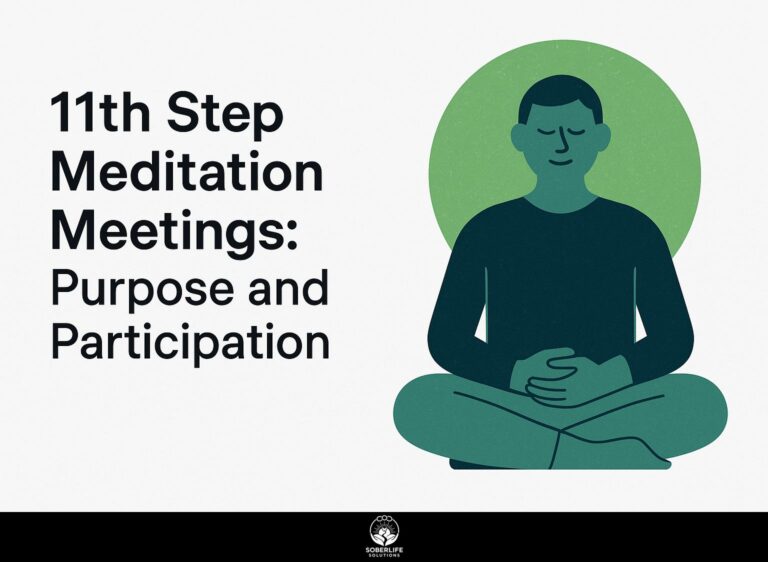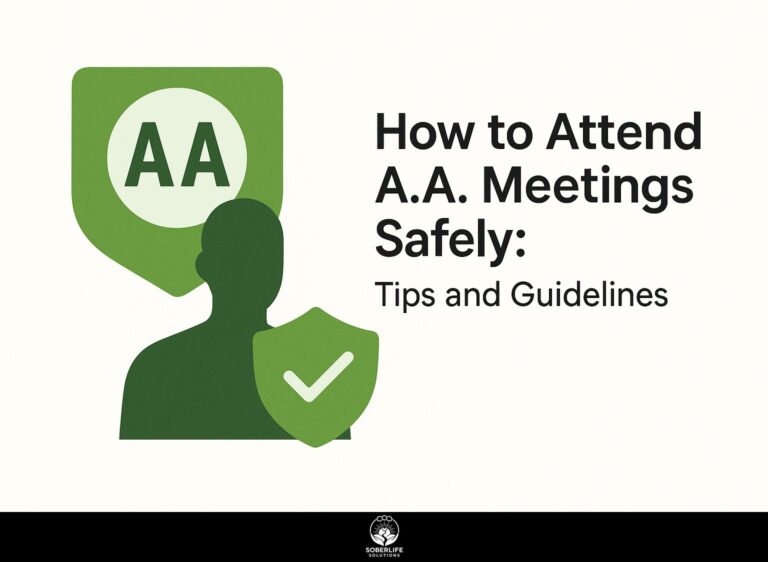How to Utilize Meditation in A.A. Meetings
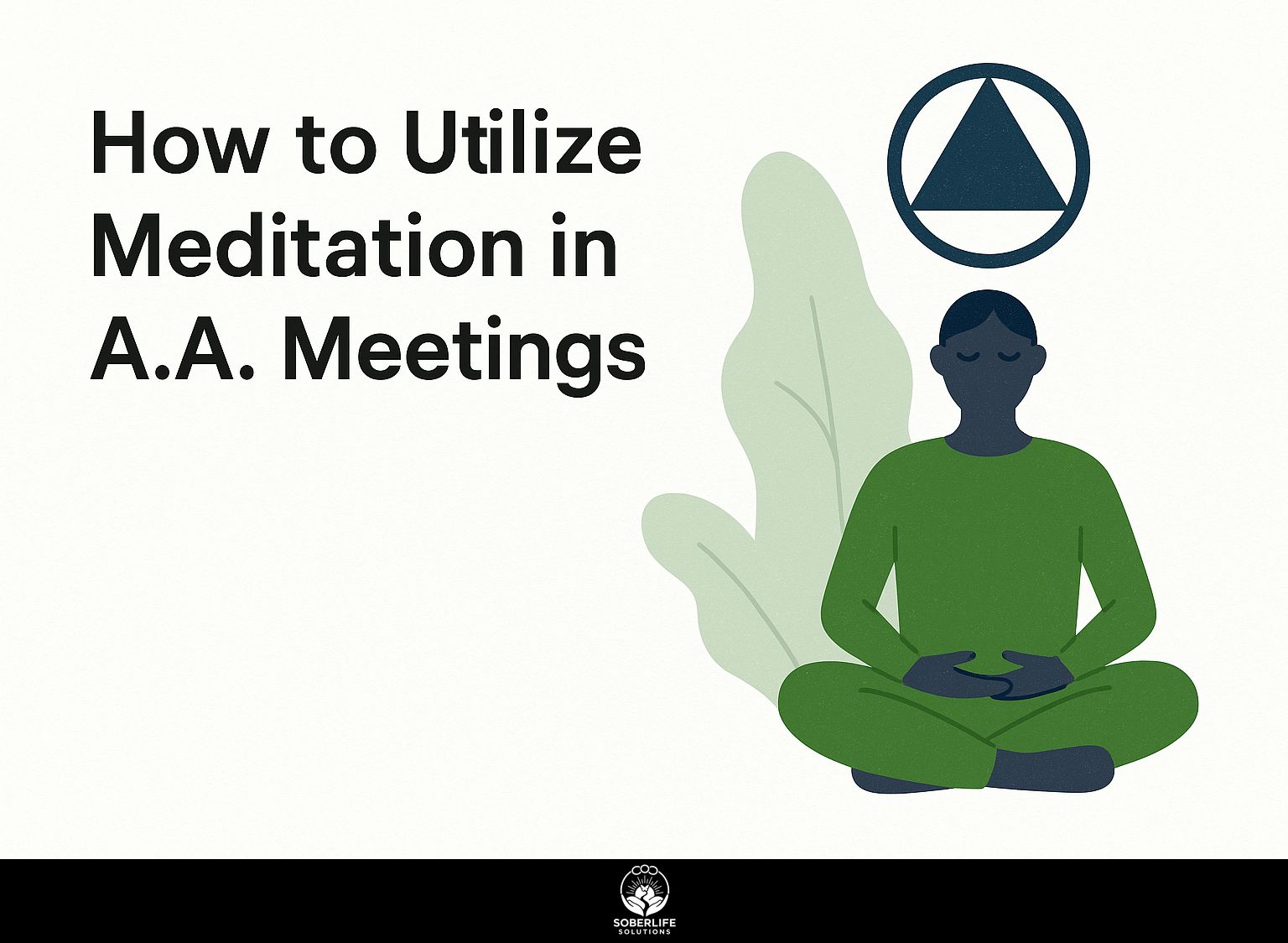
Meditation can be a powerful tool in Alcoholics Anonymous meetings, helping individuals connect with their higher power and reduce feelings of self-pity. Using methods such as morning meditation and prayer, participants can create a more meaningful spiritual experience, helping them improve their recovery process. This article explains how to add meditation to A.A. meetings. It offers practical ways to make your practice better and support other members in their path to sobriety.
Key Takeaways:
Benefits of Meditation for Recovery
Meditation helps with recovery by lowering stress and increasing emotional strength, which improves mental health.
Meditating daily can make you feel calmer. Techniques like mindfulness or loving-kindness are particularly useful.
For instance, using apps such as Headspace or Calm can guide beginners through the process, providing structured sessions that last just 10 minutes. Studies indicate that individuals practicing meditation regularly report a 30% reduction in symptoms of anxiety and depression. According to Healthline’s overview on the benefits of meditation, consistent practice can also result in improved memory and emotional regulation.
To integrate this into recovery, setting aside a quiet space each morning for meditation can create a grounding routine, enhancing overall emotional stability over time. Furthermore, recovery techniques that include meditation and mindfulness have proven beneficial in reducing stress and supporting emotional well-being.
Overview of A.A. Principles
The foundational principles of A.A., established by Bill Wilson, emphasize spiritual growth and the importance of a higher power in the recovery process.
These principles promote practices like prayer and self-reflection, which can greatly improve recovery.
For example, the practice of daily inventory aligns closely with mindfulness meditation, allowing individuals to objectively assess their thoughts and behaviors. To explore more about how mindfulness techniques can aid in this process, our insights on mindfulness-based relapse prevention offer valuable strategies.
Including meditation can deepen the spiritual practice explained in Steps 11 and 12, helping to create a bond with a higher power. Regular meditation helps people manage their emotions and stay focused, which can aid in maintaining sobriety and overall health, as outlined by Alcoholics Anonymous on their Wikipedia page.
Types of Meditation Suitable for A.A.
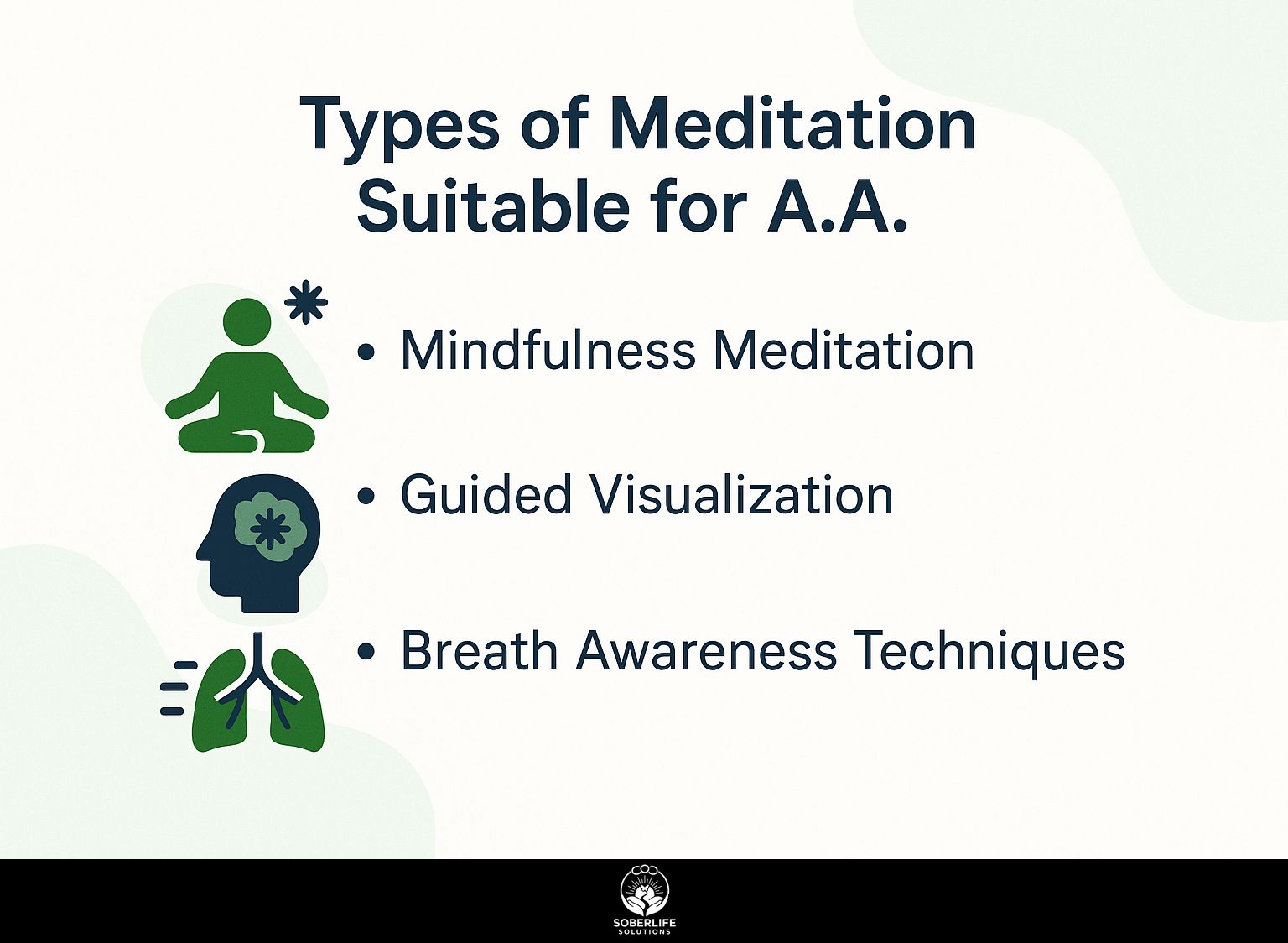
Different meditation methods can be included in A.A. programs to meet the specific needs of people in recovery. For those interested in exploring various meditation practices, this article on Healthline provides an insightful overview of different techniques that may be beneficial. Additionally, mindfulness and meditation play a crucial role in stress management for individuals in recovery. Our detailed exploration of recovery techniques highlights their impact on stress relief and overall well-being.
Mindfulness Meditation
Mindfulness meditation helps people pay attention to the present moment, which is important for A.A. members who want to handle their emotions well.
To practice mindfulness meditation, begin by finding a quiet space where distractions are minimal.
Once settled, focus on your breathing; take deep, slow breaths, noticing the rise and fall of your abdomen. As thoughts arise, acknowledge them without judgment and gently return your focus to your breath.
To improve focus, try using guided meditation apps like Headspace or Calm. Start with just five minutes daily and gradually increase the duration as you become more comfortable, allowing mindfulness to become integrated into your daily routine.
Guided Visualization
Guided visualization helps individuals in A.A. create a mental image of their goals, promoting emotional strength and clarity.
To lead a guided visualization exercise, begin by asking participants to breathe deeply and slowly to create a calm setting.
Next, invite them to envision a serene space, such as a tranquil beach or a peaceful forest. As they relax and visualize this scene, encourage them to consider their recovery goals, picturing each step needed to remain sober.
Free apps like Insight Timer offer recorded guided sessions to support emotional growth.
Breath Awareness Techniques
Breath awareness methods are easy and effective in helping A.A. members stay calm and manage emotions.
Three effective techniques include:
- Diaphragmatic breathing, where you inhale deeply through your nose, allowing your abdomen to expand, and then exhale slowly through your mouth. This method activates the body’s relaxation response.
- The 4-7-8 breathing method involves inhaling for four seconds, holding for seven seconds, and exhaling for eight seconds, promoting relaxation and reducing anxiety.
- Alternate nostril breathing balances the body’s energies and calms the mind; simply close one nostril, inhale through the other, switch, and exhale.
Regular practice of these techniques can significantly help manage stress in recovery.
Integrating Meditation into A.A. Meetings
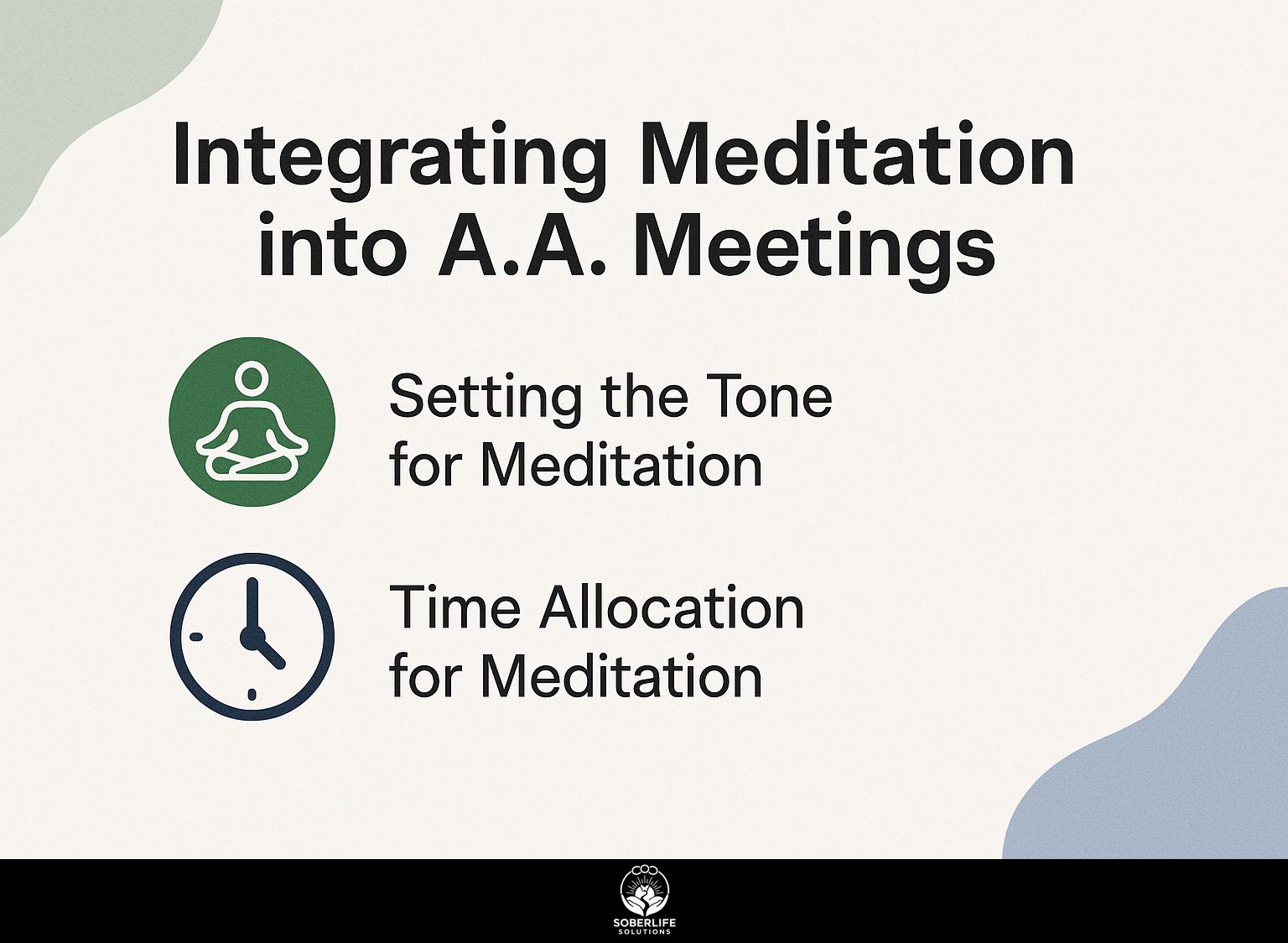
Adding meditation to A.A. meetings creates a helpful space that encourages spiritual growth and emotional healing. To enhance your understanding of how meditation can be a powerful recovery technique, explore our detailed insights on Mindfulness, Meditation, and Stress Management.
Setting the Tone for Meditation
Starting with a good mood before meditation makes it better for A.A. members, helping them be open and think about themselves.
To create this atmosphere, consider starting the session with calming music or visuals, which can help anchor participants.
Apps like Insight Timer offer playlists for meditation, and nature videos help create a peaceful environment. Sharing motivational quotes about finding oneself or being strong can create a thoughtful mood.
Recommend taking a brief pause before meditation so everyone can gather their thoughts and prepare mentally. This simple technique establishes a supportive environment, improving the quality of meditation.
Time Allocation for Meditation
Allowing time for meditation in A.A. meetings helps participants benefit fully from the practice.
To include meditation in your routine, start with 5-10 minutes if you are new and 15-20 minutes if you have practiced before. Make sure the environment is peaceful and good for thinking.
Add guided exercises or soothing music to improve the experience. Balance meditation with other meeting activities by clearly outlining the agenda.
- For instance, alternating between sharing and meditation allows for engagement without overwhelming participants.
This setup promotes a sense of unity and allows everyone time for self-reflection.
Facilitating a Meditation Session
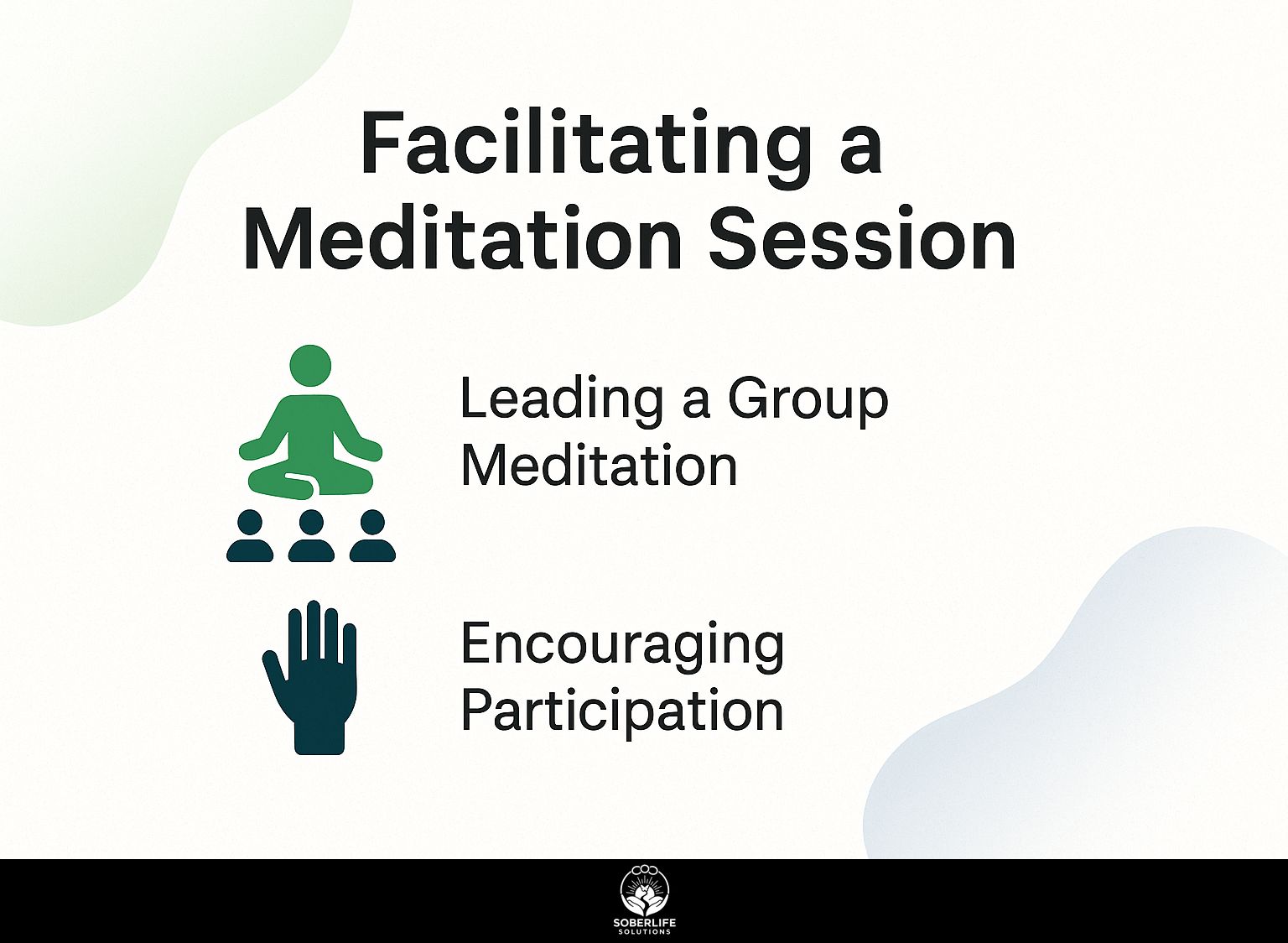
Leading meditation sessions in A.A. involves planning and being aware of what each person needs.
Leading a Group Meditation
Leading a group meditation in A.A. involves creating a safe and welcoming environment for all participants.
To make sure everyone feels at ease, begin by setting rules that focus on respecting privacy and being considerate.
Use a calm, soothing voice to guide the session, beginning with breathing exercises to promote relaxation. For instance, encourage participants to inhale deeply for a count of four, hold for four, then exhale for six.
You can use visualization methods, encouraging them to imagine a calm location during the session.
Make sure to regularly check in, giving time for feedback or shared experiences, which helps create a supportive community environment.
Encouraging Participation
Getting involved in meditation builds a feeling of togetherness and common goals in A.A.
To increase involvement, think about using some main strategies.
- First, host a regular forum where members can share their experiences or ask questions about meditation practices. This could be a weekly virtual meet-up or an online message board.
- Varying the meditation styles offered-such as guided sessions, mindfulness practices, or loving-kindness meditation-can appeal to diverse preferences.
- Highlight success stories from members who have experienced positive effects from meditation. These stories encourage others and help create a supportive setting that motivates people to get involved.
Overcoming Common Challenges
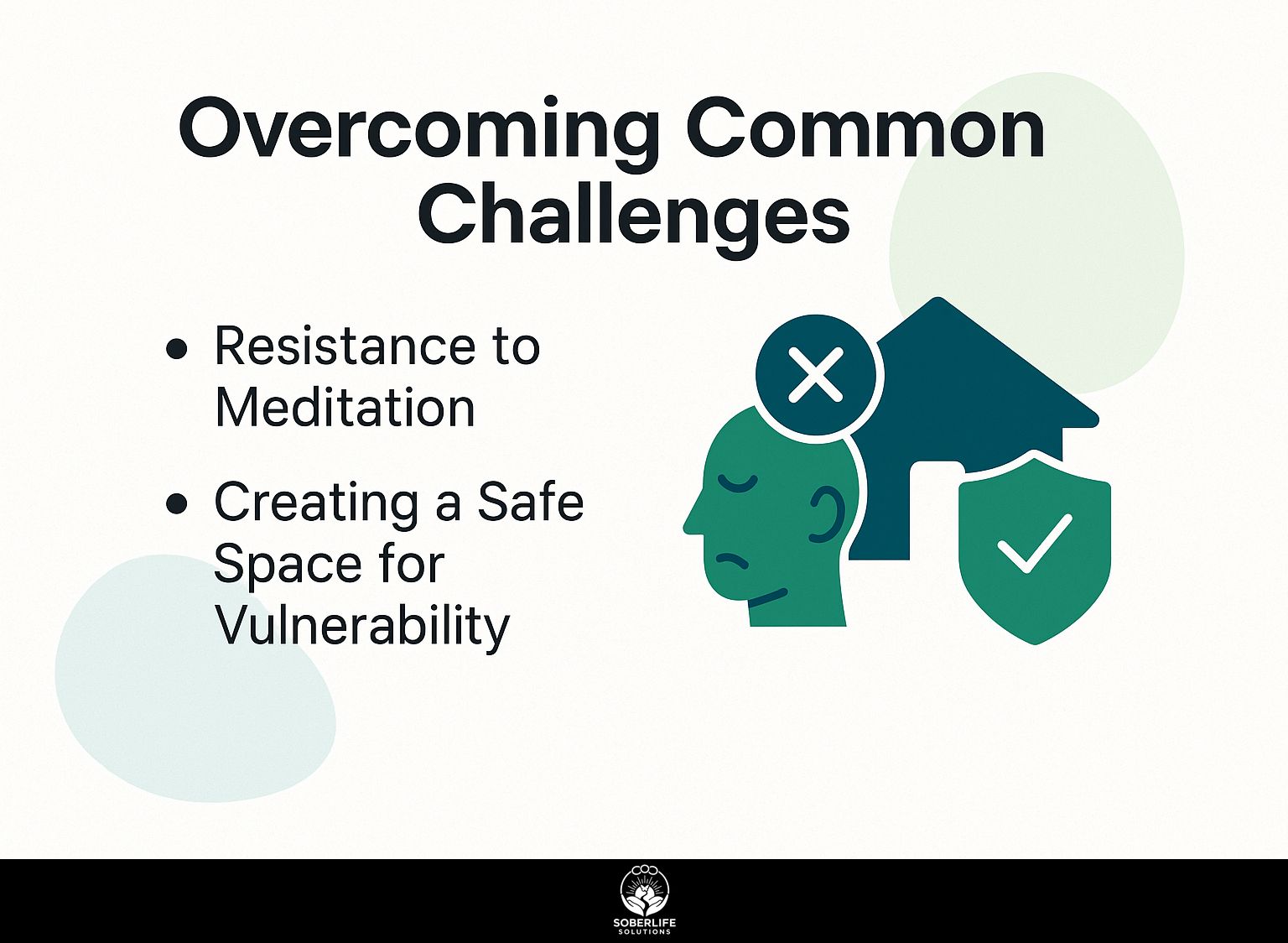
Tackling typical issues linked to meditation in A.A. is key to improving member participation and the success of the practice. Related insight: Developing self-care habits can significantly enhance the effectiveness of meditation in recovery settings.
Resistance to Meditation
Some people may hesitate to try meditation because of misunderstandings and worry. Talking about these issues can help them start practicing it.
Common reasons include skepticism about the effectiveness of meditation, discomfort with silence, and the belief that they lack the time.
To counter these, provide educational resources about the benefits, such as reduced stress and improved focus.
Gradually introduce meditation by starting with just five minutes a day, using guided apps like Headspace or Calm, which offer easy entry points.
Encourage reflection on the experience after each session, helping them recognize positive changes over time.
Creating a Safe Space for Vulnerability
It’s important to create a safe and caring space to help A.A. members feel comfortable with meditation and sharing their experiences.
To create a sense of emotional safety, begin by setting clear rules about keeping information private. This means reminding members that what is shared in the group stays in the group.
Use non-judgmental language to encourage openness, framing questions in a way that validates each person’s feelings. For instance, instead of asking ‘Why do you feel that way?’, try ‘Can you tell us more about your thoughts?’
Facilitators should be willing to share their own challenges with meditation, demonstrating that it is a unique experience for each person.
Frequently Asked Questions
What is the purpose of utilizing meditation in A.A. meetings?
The purpose of utilizing meditation in A.A. meetings is to help members focus on their sobriety and connect with a higher power. It can also provide a sense of calmness and clarity during the meeting.
How can I add meditation to A.A. meetings?
One way to include meditation in A.A. meetings is to start with a few minutes of silent meditation at the beginning of the meeting. You can also lead a guided meditation during the meeting or end the meeting with a group meditation.
Do I need to have experience with meditation to participate in A.A. meetings?
No, you do not need to have any prior experience with meditation to participate in A.A. meetings. Meditation is just a method that can support people in their path to staying sober, and there isn’t a correct or incorrect way to do it.
Can I practice any type of meditation in A.A. meetings?
Yes, you can practice any type of meditation that feels comfortable and helpful for you in A.A. meetings. Some common types of meditation include mindfulness, guided imagery, and loving-kindness meditation.
How can meditation benefit my recovery in A.A. meetings?
Meditation can benefit your recovery in A.A. meetings by providing a sense of relaxation, promoting self-awareness, and helping you connect with a higher power. It can also serve as a helpful coping mechanism for dealing with cravings and triggers.
Is it okay to skip the meditation portion of A.A. meetings?
Each person can choose whether to join the meditation part of A.A. meetings. However, you should consider trying it to see if it helps with your recovery.


